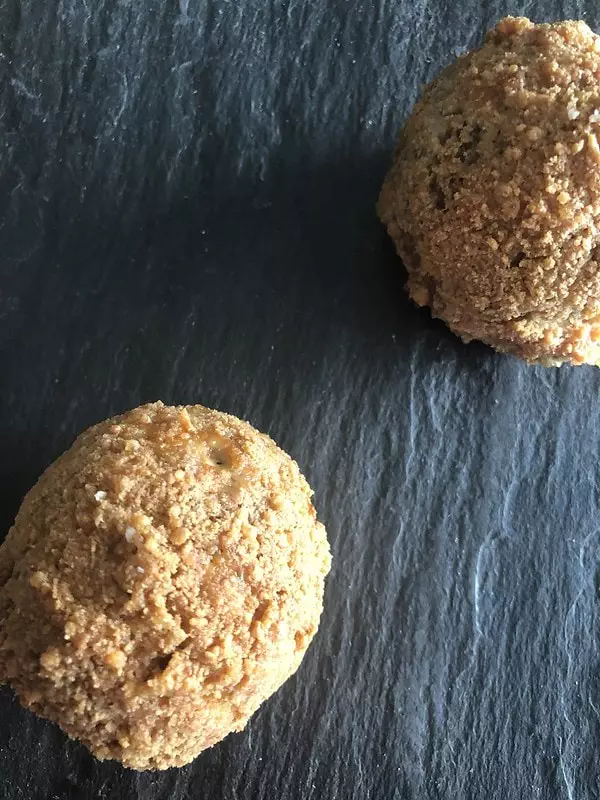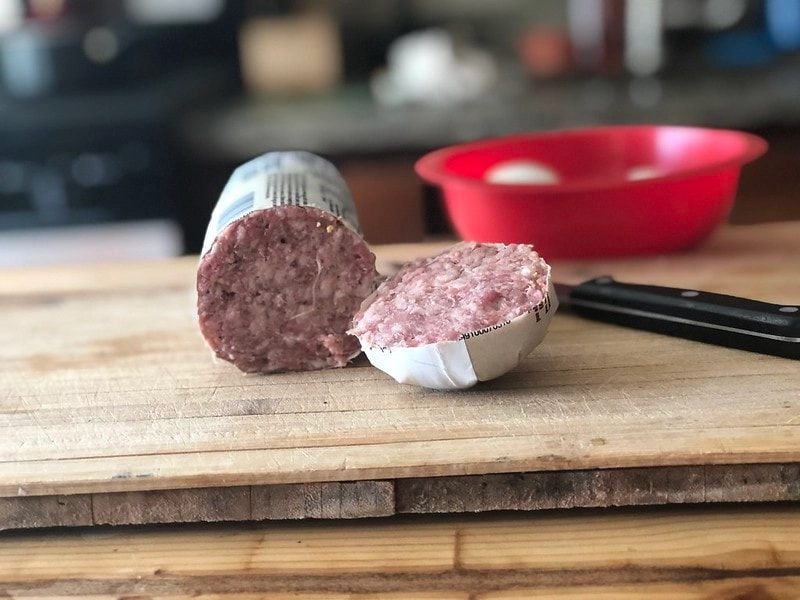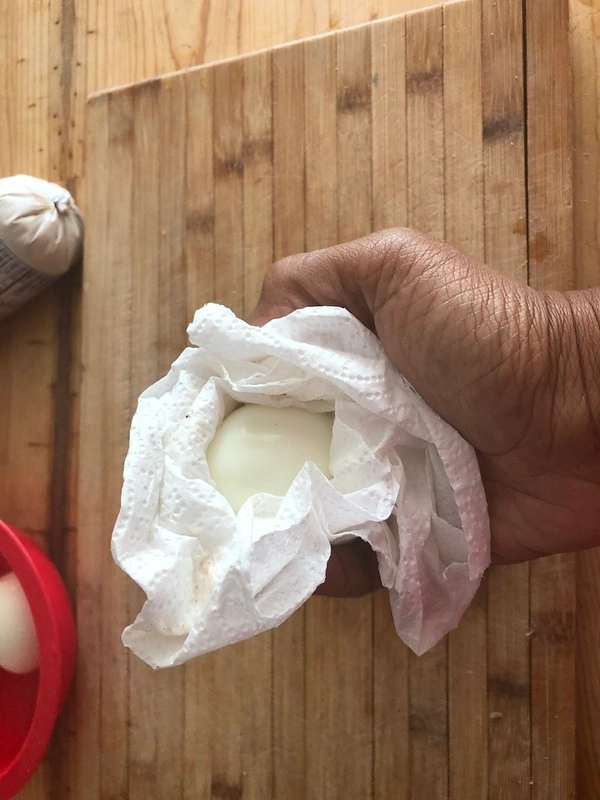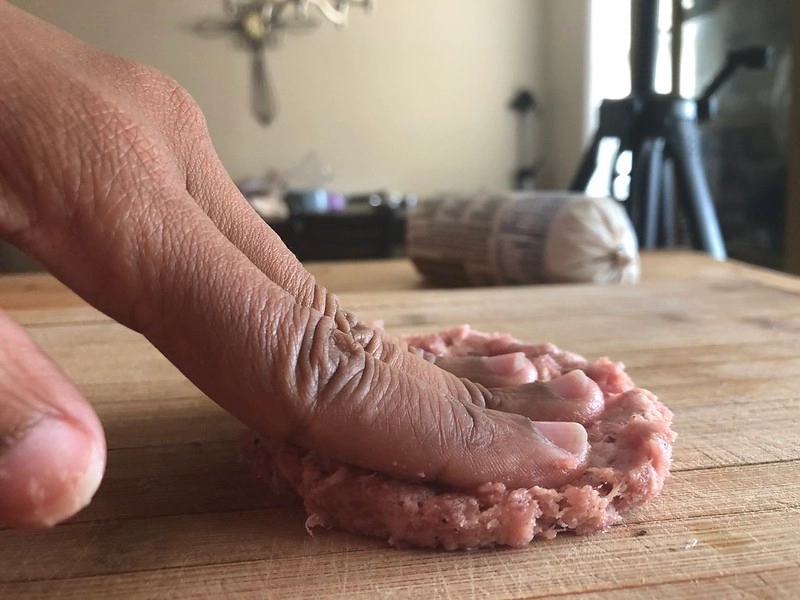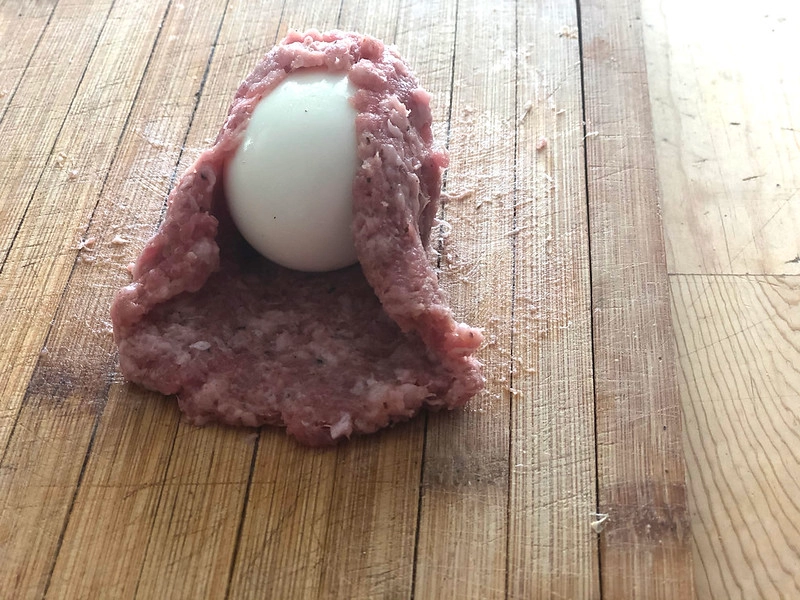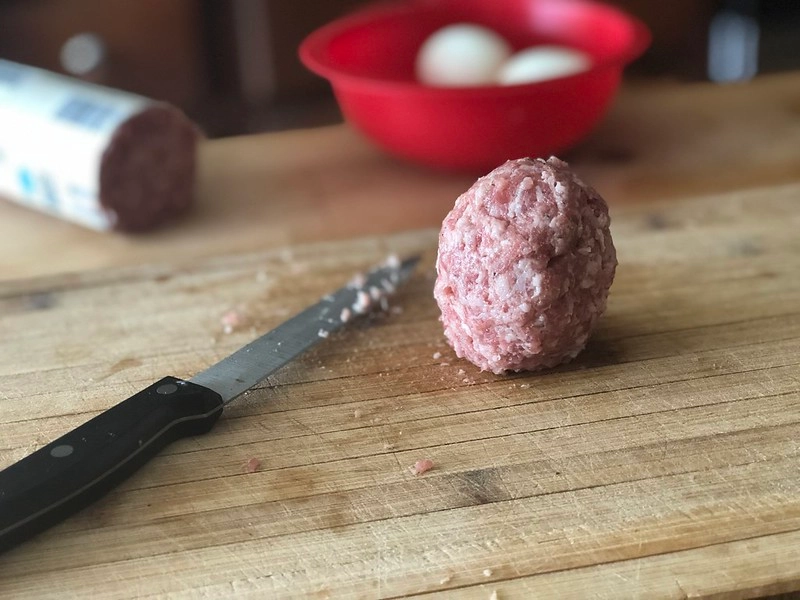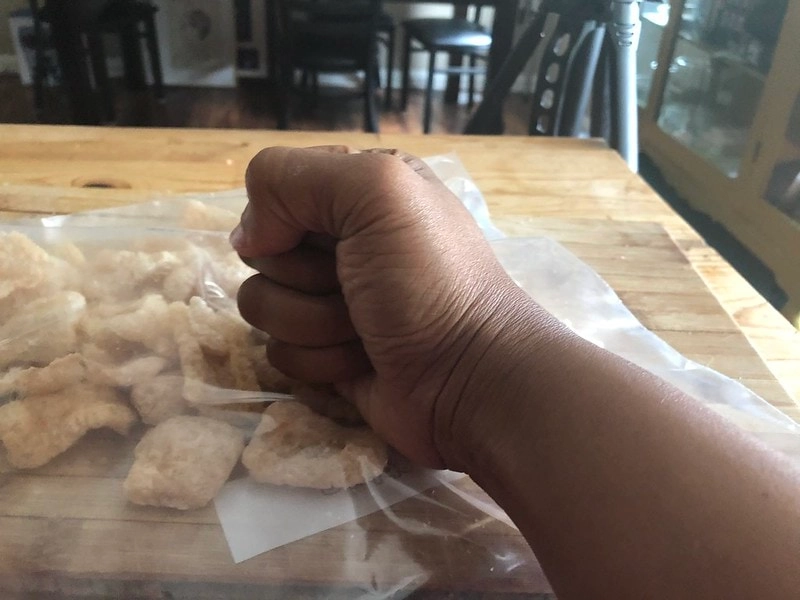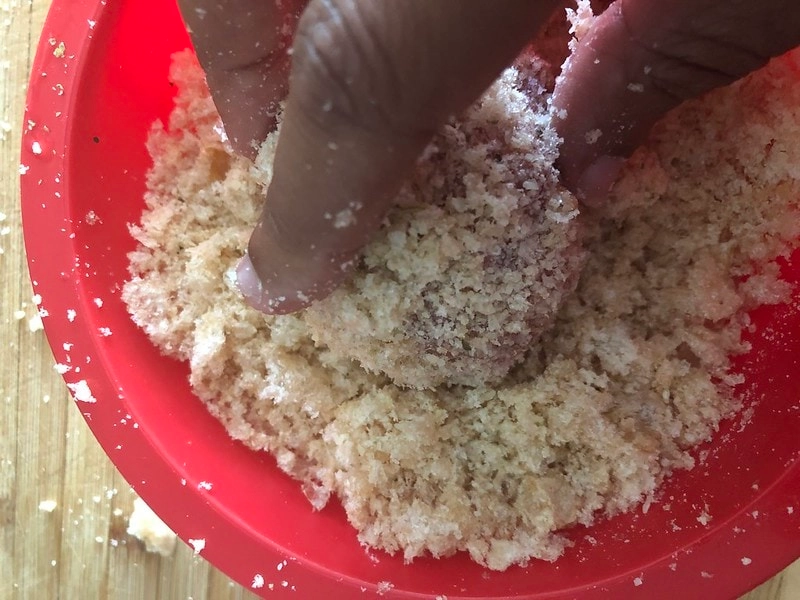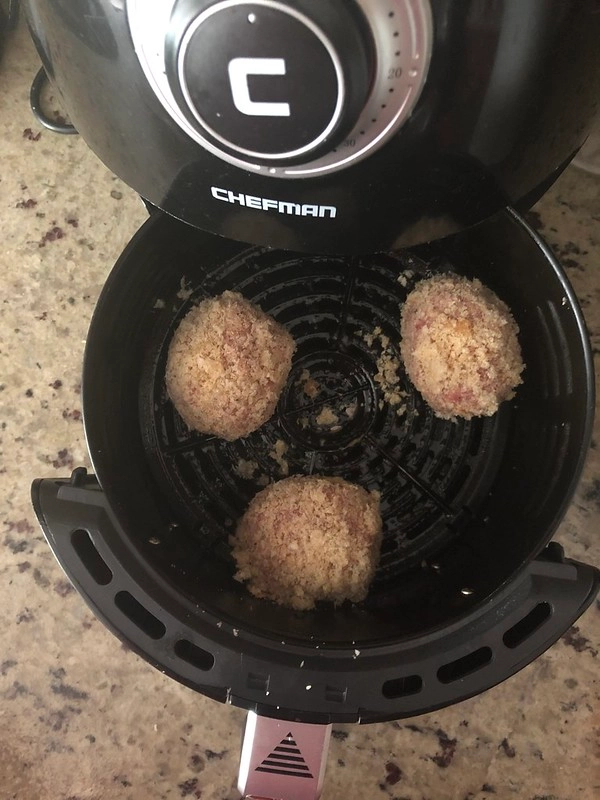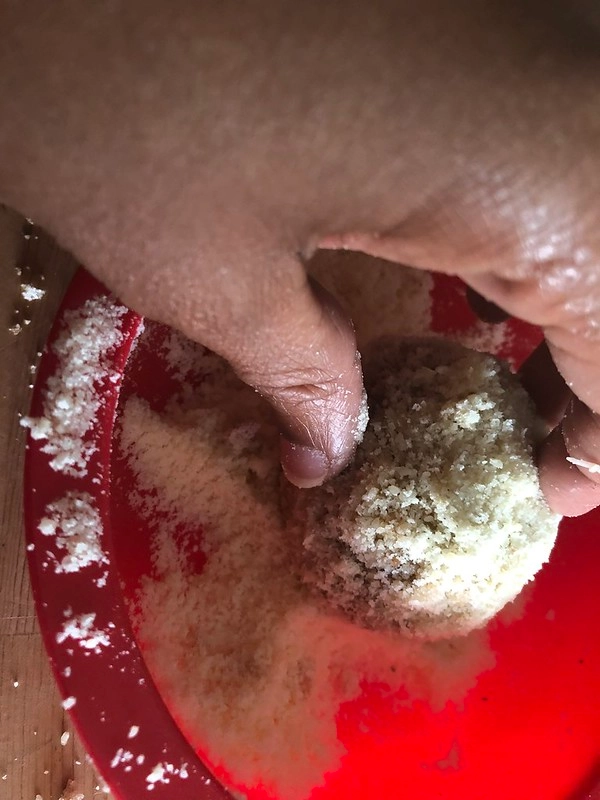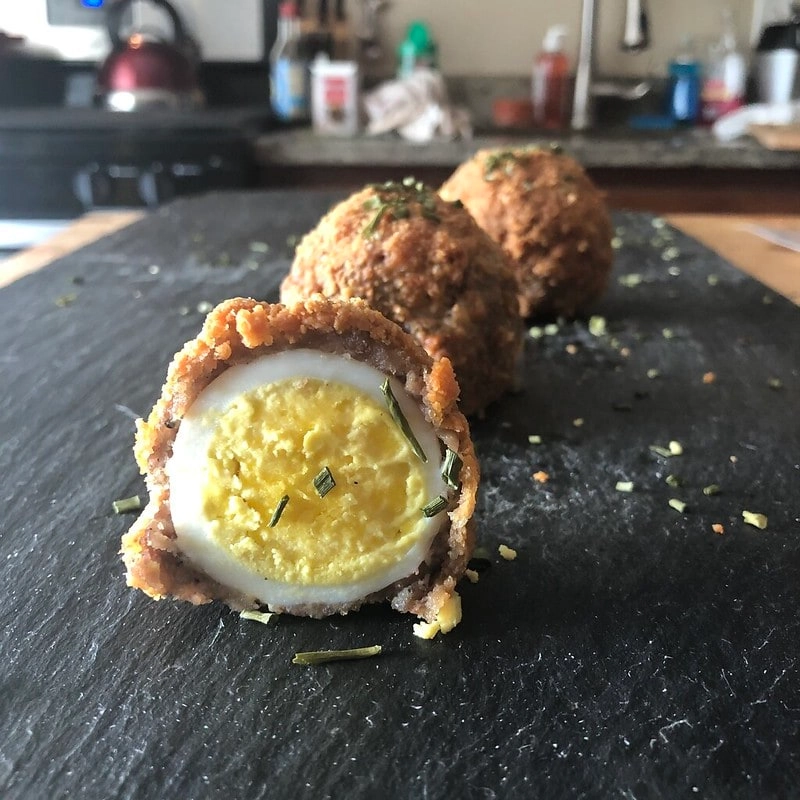(This post contains Amazon affiliate links. That means if you click the links, and then order something from the Amazon website, Bariatric Foodie will receive a small commission, which helps this website keep the lights on. After reading this post, I hope you can appreciate why that’s helpful!)
The first thing you need to know about Scotch Eggs are…it’s all about the choices.
How you swap ingredients on this recipe can make or break it! Now, I have a Scotch Egg recipe in The Bariatric Foodie Breakfast Book, but in that one I relented and just used the crumbs that are the traditional exterior. Granted, overall I gave a good, healthy recipe, but I have always wondered if there was more I could do.
Finding the answer would prove to be an adventure! But one I was happy to go on because the final result is sooooo yummy!
What the hell is a Scotch Egg?
I realize this is probably where I should start this adventure because some of you may have never heard of them. A Scotch Egg is a hard boiled egg, wrapped in a sausage mixture, coated in bread crumbs and spices and fried until crispy. Ya with me so far? Lovely!
Now, obviously that’s not the way we’re going to make Scotch Eggs but it’s good to have an understanding of the original concept. Now, there’s some debate about the origin of this, but it definitely came out of the UK some kind of way. In my head, it’s the predecessor to all things deep fried at midwest US state fairs!
Traditionally, Scotch Eggs are a picnic food, but I never go on picnics so, up to this point, they’ve just been really good pack ahead breakfasts to take to work. Think about it. It has everything you want in breakfast in one convenient package!
So let’s get into how to actually make one. (Or two…or five…)
Making a Scotch Egg
So Scotch Eggs start off with…well, eggs. Hard-boiled eggs to be exact. I finally think I have my hard-boiled egg method down. I’ve been hearing you guys rave about making eggs in the InstantPot but right now I’m at critical mass on kitchen gadgets so I’m not going to get one just yet. Besides, I wanted to perfect the “old skool” method. Y’know…just in case the zombie apocalypse happens. I feel like my ability to bake things from scratch and produce unblemished hard-boiled eggs are skills folks would protect me for!
Anyhoo…I don’t really care how you arrive at peeled, hard-boiled eggs. Buy them if that’s your jam. The main point is that you need some peeled, hard-boiled eggs. I used four. For my purposes, I boiled them to a firm yolk but not fully cooked (I checked one before prepping the other three). I think that was a good decision in the end. I’ll explain why later.
Decision #1: The Sausage
So the first thing you need to decide is what kind of sausage you’ll use. On the day I photographed myself making Scotch Eggs, I only had regular pork sausage, but I’ve also made them with turkey breakfast sausage as well. That probably would work better in this application to both control the fat and the amount of oil in the final product. You’ll see why in a moment.
If you have time and want to be extra-extra, you could even get ground turkey or ground pork and throw some salt, pepper, garlic, sage and paprika in there to use. The appeal of doing that is being able to control the salt content. Again, you’ll see why that’s important in a moment!
So you basically need to wrap the sausage around the hardboiled egg. Pro-Tip: Dry the egg first! Some recipes call for coating the egg in flour in order to get it dry enough for the sausage to stick but I found a good ol’ paper towel does just fine.
From there, you’ll put your sausage on a clean surface and press it into a large, flat disc. I usually cut a slice of the sausage that’s about a half-inch thick and work with that. If you want to measure it out (which would probably make tracking easier) do that.
Then simply place the egg in the middle of the sausage disc…
Until it looks like a huge monstrocity!
I used the knife to help seal up any gaps in the sausage. It’s pretty important that there aren’t any gaping holes in the sausage when you cook it. Moving on…
Decision #2: The outer coating
So like I said, I’ve made these with a crumb outer coating but this whole keto movement has put all sorts of ideas in my head, one of which being the use of crushed pork rinds as bread crumbs. I was kind of dubious about this idea until I tried it to make Chicken Parmesan (a recipe I vow to get on this site…someday). They actually work quite well and produce a crispy crust so I decided to give it a whirl.
Well…there were problems. Let’s talk about them. But first, let’s talk about the basic method I used. First, I crushed up the pork rinds. Now…you can buy pork rind bread crumbs but I am cheap. I went down to the dollar store and bought myself a bag of pork rinds and took out the frustrations of my life on them, like so.
To each his or her own.
Next, I rolled the sausage-covered egg around in the pork rinds until they are well coated.
And theoretically this should have all worked out beautifully. But it didn’t. To understand why, we must talk about…
Decision #3: The cooking method
Y’all. I am in LOVE with my air fryer. Like in love-love. Like “I’ve stopped seeing other kitchen appliances because I’ve been spending all my time with the air fryer” love. The thing is just so easy to use! And I don’t even have an expensive one.
So obviously I wanted to cook these in my air fryer and avoid all that extra fat from frying in oil (and…I dunno about you but since I got the air fryer, turning on the actual oven seems like so much!)
So here’s what had happened. (And I didn’t get photographs of this part…sorry!)
Basically I had an egg, wrapped in fatty sausage, with fatty pork rind crumbs on the outside. What does fat produce when it gets hot? GREASE! Now, the air fryer drains grease off of food so I wasn’t too worried about that going in but I failed to consider basic physics.
Long story short, the grease took the pork rind crumbs with it. Oof. Now in subsequent makings of these (I really did make a bunch of them to test stuff out!) when I used a lower fat sausage, the pork rinds stayed put better, but I always had some drainage. And a Scotch Egg without the outer crispy coating just isn’t a Scotch Egg, so I turned to my other go-to for crispy, savory coatings…
Parmesan cheese! The kind in the green canister, to be precise. And that’s what yielded the beautiful, crispy outer texture you see above. But. With trade-offs there is always something. (Always…)
Because I was using pork sausage and Parmesan cheese, the egg came out really salty! (Like I am that person who salts food before even tasting it so if I say it’s salty, it’s probably about 7 steps past salty for the rest of you.) The next time I made them, I used reduced sodium Jennie-O Turkey breakfast sausage (I got it at Wal-Mart) and that seemed to alleviate the problem. Plus, with that last swap I finally, finally, finally seemed to achieve a balance of fat I could live with! It wasn’t too greasy. It wasn’t too salty. And because I didn’t fully boil the egg yolk to hard, it didn’t dry out. It. Was. Perfection.
Whew! I put in some work, Foodies! But you guys are worth it.
So just know that the recipe below reflects all the tips I gave you throughout this post. In reality, Scotch Eggs are NOT hard to make. They also don’t take that long to prep. But, like I said, the final product is all about the decisions you make.
Which is why, as in all my recipes, I am not giving you the nutritional info for this recipe but I would like you to give this one a whirl if the flavor combo seems appealing to you and fiddle with the ingredients until you get to a number you are comfortable with.
Me? Well, I was the envy of my office for a solid week because I literally never got tired of making these. And the fam seemed to like them so for every four I made, I got to keep one. 😉
Enjoy!
- 4 large eggs hard-boiled and peeled
- 8 oz. ground breakfast sausage (whatever kind you like)
- 1/2 c. grated Parmesan cheese
- 1/4 tsp. Italian seasoning
- 1/4 tsp. Garlic Powder (optional)
- Divide the sausage into four equal parts. On a clean surface, press the sausage out into a large disc. Place egg in the middle and completely wrap in sausage. (TIP: Use a paper towel to make sure the outer surface of the egg is dry before wrapping.)
- Place Parmesan cheese, Italian seasoning, and garlic powder in a bowl or zip-top bag. Mix well then roll eggs in the mixture to coat them.
- Spray out the basket of an air fryer with nonstick cooking spray. If you don't have an air-fryer, heat your oven to 400 degrees and coat a cookie sheet with parchment paper.
- Cook the eggs for 20 minutes in the air fryer, flipping halfway through. If you are using an oven, bake on a cookie sheet fitted with a rack for 20 minutes, flipping halfway through.
- When done, they should be golden brown in appearance and crispy. IMPORTANT: allow the eggs to cool before extracting them so the bottom doesn't stick.
- Serve with your favorite dipping sauce or by themselves!
- You'll see extra seasonings in recipes for Scotch Eggs online. The recipe in the Bariatric Foodie Breakfast Book aligns more closely with traditional Scotch Egg recipes, but the recipe I give you here is the one I like better!
- If the Jennie-O sausage still proves too salty in the final product (or if you just find that sausage salty to begin with) try using 8 oz. of lean ground turkey and mix in 1/4 tsp. salt, 1/4 tsp. garlic powder, 1/8 tsp dried sage, 1/8 tsp. oregano and mixing it thoroughly and use that instead of sausage.
- If you have no beef with bread crumbs, go for it! I suggest whole wheat Panko. 😉
 Bariatric Foodie Play with your food
Bariatric Foodie Play with your food

